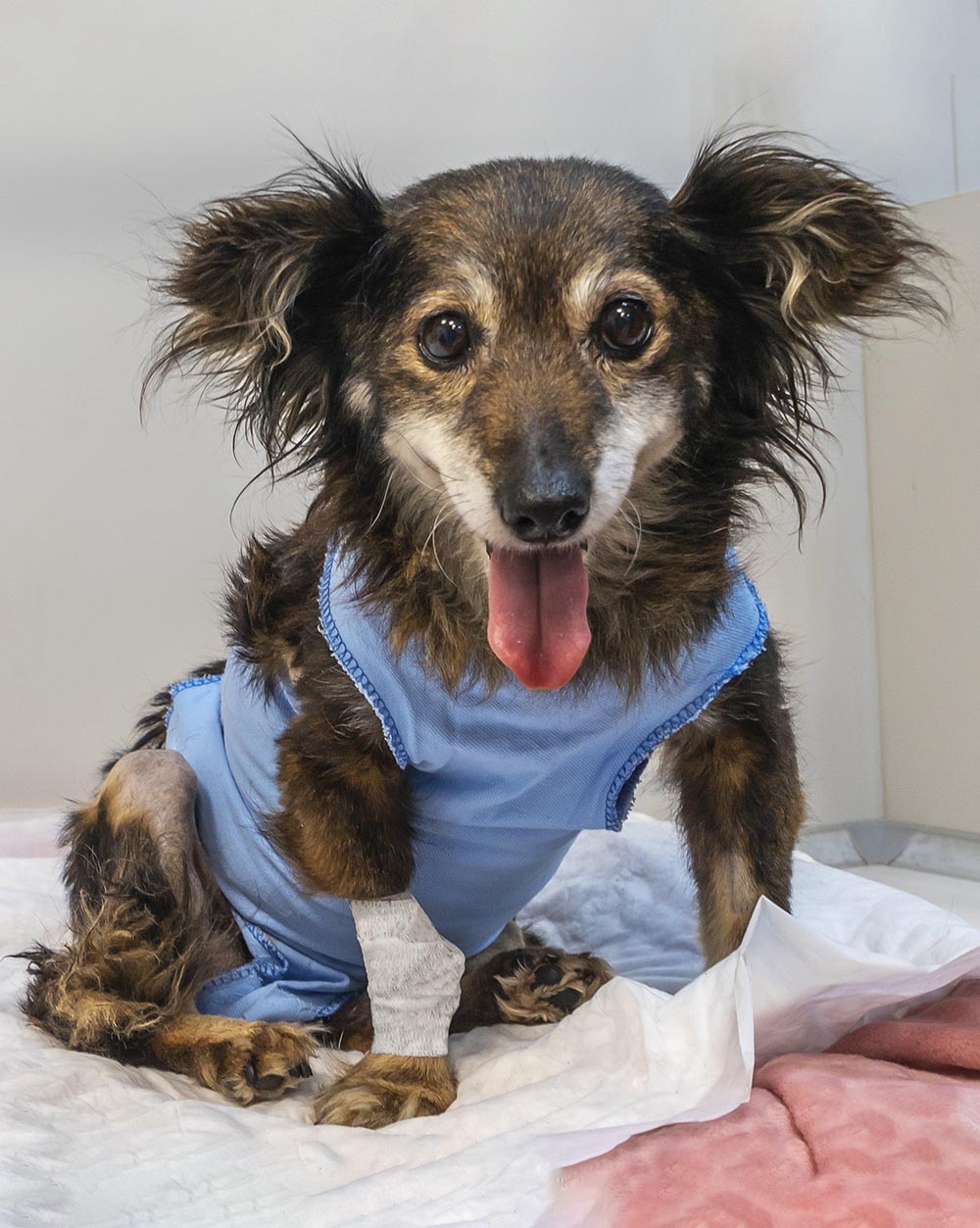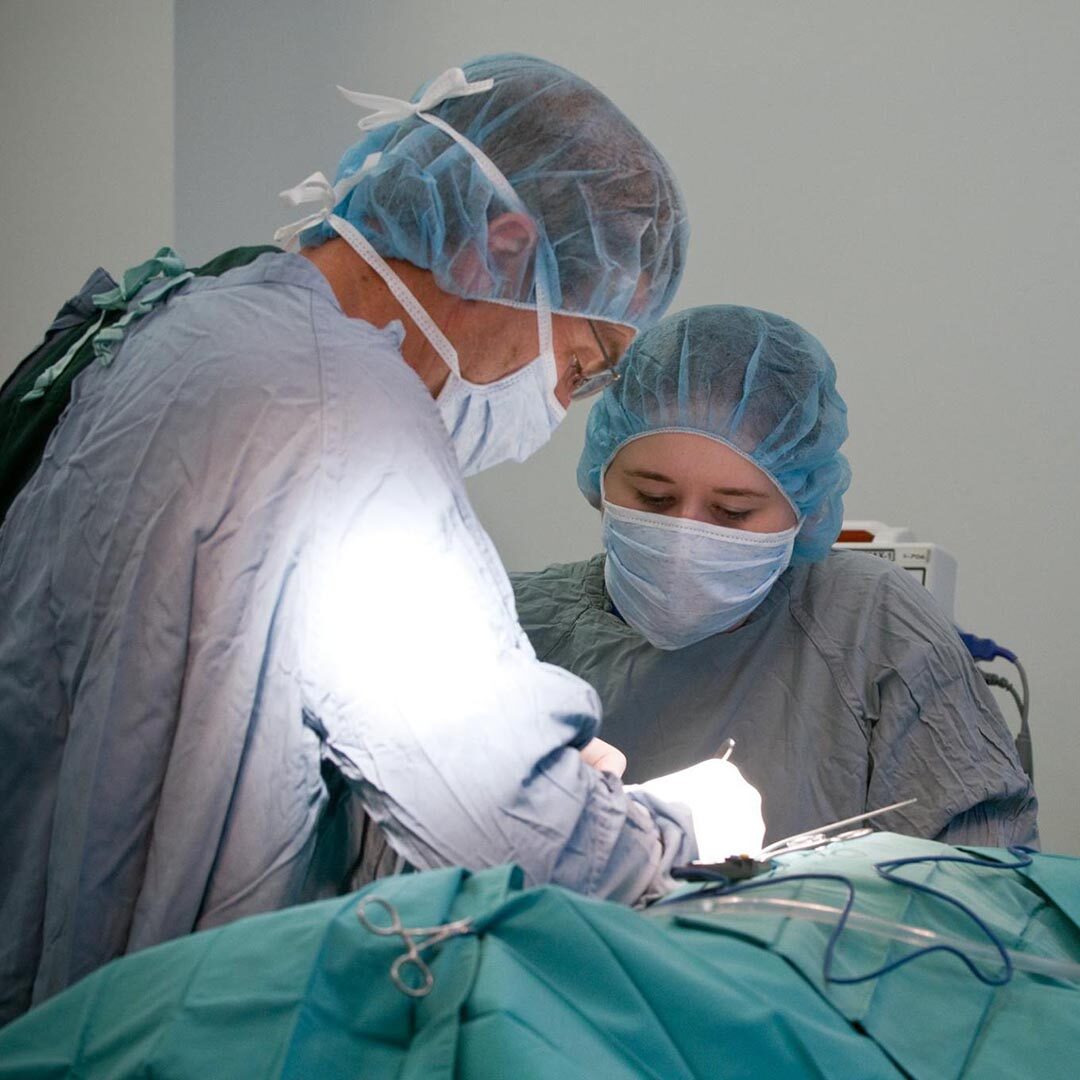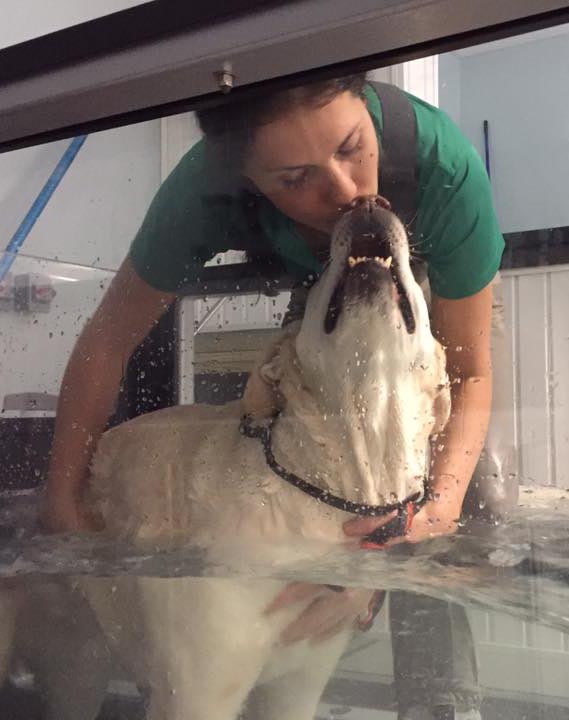How does the CCL rupture?
The conditions that may predispose a pet to Cranial Cruciate ligament rupture are often present in both knees, and many dogs will rupture both cranial cruciate ligaments.
Acute Rupture
Acute rupture of the cranial cruciate ligament (CCL) is caused by sudden, severe twisting of the stifle joint. The injury usually occurs when animal jumps quickly from a height (from a deck, for instance), steps in a hole or uneven ground while running, or turns quickly while the paw remains planted. The twisting motion causes the ligament to partially or completely rupture. The meniscus may also be damaged.
Chronic Rupture
Chronic rupture occurs after the ligament has degenerated with age, disease, or structural abnormality. The fibers weaken and partially tear, the joint becomes unstable, and degenerative joint disease develops. A partially torn CCL is likely to eventually tear completely.

What signs will I see if my dog ruptures a CCL?
There are a wide variety of symptoms your pet may display, depending on whether the rupture is acute, chronic, or partial. Limping may be severe or mild, consistent or intermittent. It is always best to address lameness proactively and seek diagnosis from a veterinarian, as cruciate ligament injuries will not heal on their own.

What are the treatment options at VMC?
While no treatment will prevent the development of arthritis in the injured joint, surgical intervention is believed to provide the pet with better overall function. Currently, there are two procedures recommended and performed at VMC.
What are the potential complications of surgery?
Any time an animal (or human) undergoes anesthesia there is the risk of adverse reactions to anesthesia, including death. Complications associated with surgery and anesthesia are uncommon at VMC, however. Our anesthetic protocols are constantly reevaluated at VMC to ensure we are current with the most modern, safest practices. Blood work and other diagnostic tests(if indicated) are performed prior to anesthesia to is performed prior to identify any underlying medical conditions. A licensed veterinary technician will be dedicated to monitoring your pet’s vital signs and condition for the entire surgical and anesthetic recovery period.
Complications associated with cruciate ligament repairs are uncommon, but include excessive bleeding, infection, fracture of the tibial crest or fibula, and surgical implant failure. It is essential that the post-operative instructions be followed precisely in order to prevent surgical site infections (can be due to dogs licking the incision), failure of the suture or implant (breakage of the suture or TPLO plate) or fracture of the tibia.
What will the recovery process be?
Surgical patients at VMC receive detailed personalized instructions regarding post operative care at the time of discharge.
Regardless of the procedure your pet undergoes, your dog will require eight to twelve weeks of exercise restrictions. Failure to follow the instructions for exercise restriction and monitoring detailed in the discharge instructions can result in severe complications, including complete failure of the surgical repair. To avoid complications and the potential for additional surgeries, you must follow our postoperative instructions conscientiously!
Appropriately guided physical rehabilitation, however, is an essential part of a full recovery. A detailed program will be outlined for you and your pet that involves a gradual, controlled increase of flexibility and strengthening exercises. Most dogs are allowed to return to normal activity after 3-4 months, provided the bone has healed completely and muscles have been rehabilitated.
The skin sutures or staples will need to be removed 10 – 14 days after surgery. Recheck appointments will be required in 6 weeks to assess healing. X-rays (radiographs) may be required to assess bone healing if TPLO was performed.

